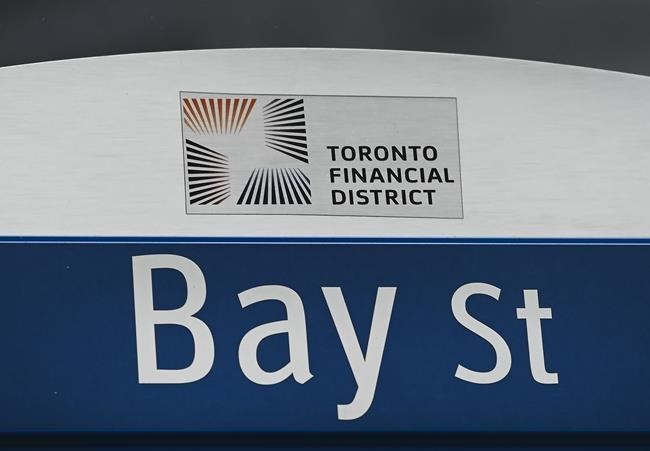TORONTO — A move in crude oil prices above US$100 per barrel and higher gold prices weren't enough to prevent Canada's main stock index from swinging lower on the eve of an expected move by the Bank of Canada to hike interest rates.
North American stock markets started strong in the morning but progressively lost ground through the close.Â
Data released Tuesday said U.S. consumer prices reached its highest level since 1981 by moving 8.5 per cent higher in March from a year earlier. However, the core inflation number excluding fuel and food was a little less than expected.
"We had a pretty good morning and then things were just kind of fading as the day goes on. That's indicative of a market where the bulls come in but they don't have enough behind them to keep it going," said Colin Cieszynski, chief market strategist at SIA Wealth Management.Â
He said central banks are facing pressure to raise rates and aggressively tighten monetary policy.
"And we may start to see that with the Bank of Canada tomorrow. They're generally expected to hike a half a point, and I think, given that they've been hinting at it in their last two statements, they're either going to probably introduce or announce when they're going to start quantitative tightening," Cieszynski said in an interview.
Investors will also be watching for the start of earnings season with some major U.S. banks reporting on Wednesday.
"We'll be keeping an eye on that and what did they say about their outlooks and so on that could be tied back to Canada."
The S&P/TSX composite index lost 75.08 points to close at 21,715.41 after reaching an intraday high of 21,948.60.
In New York, the Dow Jones industrial average was down 87.72 points at 34,220.36. The S&P 500 index was down 15.08 points at 4,397.45, while the Nasdaq composite was down 40.39 points at 13,371.57.Â
The Toronto-based market was helped by rising commodity prices with crude oil increasing nearly seven per cent after China announced an easing of lockdown restrictions put in place following an increase in COVID-19 infections in Shanghai.
The May crude oil contract was up US$6.31 at US$100.60 per barrel and the May natural gas contract was up 3.7 cents at US$6.68 per mmBTU.Â
The energy sector gained 2.4 per cent with shares of Whitecap Resources Inc. increasing 4.7 per cent.
The 91Ô´´ dollar traded for 79.26 cents US compared with 79.23 cents US on Monday.Â
Materials climbed as metals, fertilizers, steel, platinum and other commodity type sectors had a good day.
The June gold contract was up US$27.90 at US$1,976.10 an ounce and the May copper contract was up 7.6 cents at US$4.71 a pound.Â
The remaining nine major sectors on the TSX were down with the heavyweight financials losing about 1.1 per cent as all 91Ô´´ banks decreased, led by a 2.4 per cent fall by Laurentian Bank.
While banks are helped by the prospect of higher rates, investors worry that central bank moves will slow the economy enough to prompt a recession and hurt loan volumes. In addition, bond yields fell Tuesday from their three-year highs.
Technology was pushed lower by a 4.3 per cent decrease in Shopify Inc. and 3.8 per cent drop by Lightspeed Commerce Inc.Â
Health care also decreased as shares of cannabis producer Tilray Inc. dropped 2.6 per cent after it signed a definitive agreement for its proposed plan with rival Hexo Corp. first announced last month. Under the deal, Tilray will acquire the US$193 million in outstanding senior secured convertible notes that were issued by Hexo and held by funds affiliated with HT Investments MA LLC.Â
Cieszynski said the TSX was dragged down by these other sectors and general softness in equity markets around the world.
"So I think all things considered, we're doing relatively well today."
This report by The 91Ô´´ Press was first published April 12, 2022.Â
Companies in this story: (TSX:WCP, TSX:SHOP, TSX:LSPD, TSX:LB, TSX:TLRY, TSX:GSPTSE, TSX:CADUSD=X)Â
Ross Marowits, The 91Ô´´ Press



